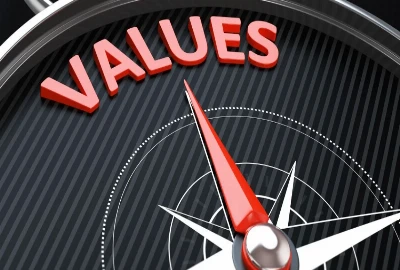Everything is Content: The Blurring of Life and Livelihood

There was a time when content creation was limited to journalists, photographers, and filmmakers. Today, thanks to smartphones and social platforms, everyone is a content creator. Whether you’re sharing an outfit-of-the-day on Instagram, documenting your meal on TikTok, or turning your morning walk into a vlog, the line between living and producing has blurred. What once was just life is now content.
This shift reflects the powerful pull of digital culture. Social media rewards visibility, and visibility is built through constant posting. From influencers and freelancers to everyday users, the message is clear: everything is content. Dinner with friends? Post it. Your new skincare routine? Share it. Even downtime isn’t exempt — a lazy Sunday at home becomes an aesthetic “self-care” Reel.
On one hand, this democratization of content is empowering. People can document their experiences, share knowledge, and turn creativity into income. On the other hand, the constant conversion of life into content creates pressure, anxiety, and burnout. Living authentically becomes difficult when every moment feels like potential material for an audience.
The rise of this mindset has major cultural implications. Our sense of privacy, leisure, and even self-worth are increasingly tied to how “content-worthy” our lives appear. In this blog, we’ll explore why the “everything is content” culture took off, the risks of blurring life and livelihood, and strategies to reclaim balance in a world where the camera is always rolling.
Why ‘Everything is Content’ Became the New Normal
To understand this cultural shift, we need to look at how social media changed the way we view everyday life. Platforms like Instagram, TikTok, and YouTube thrive on endless streams of content. Their algorithms prioritize frequent posting, rewarding creators who churn out material consistently. For professionals, this means the more content you make, the more chances you have to reach new audiences. Over time, this logic trickled down to casual users too.
The phrase “everything is content” became a mantra because it lowers the barrier to posting. You don’t need a big idea — you just need to document what’s already happening. Your commute, your lunch, your shopping trip — all of it can be repackaged for the feed. The casual becomes performative, and the private becomes public.
Another reason this mindset dominates is the rise of the creator economy. Millions of people now earn income through platforms that pay for content, whether via brand deals, ad revenue, or subscription models. Turning daily life into content isn’t just for fun; it’s often financially motivated. A funny story at work could become a viral TikTok. A fitness routine could be monetized through YouTube. Life becomes both raw material and product.
Social validation is another driver. Likes, comments, and shares act as instant feedback loops, making the act of posting addictive. Even outside of professional contexts, the dopamine hit from engagement incentivizes people to constantly share. Over time, we’re conditioned to see life not just as something to live, but as something to package.
Ultimately, “everything is content” became normal because it fits perfectly into the rhythms of modern digital culture: fast, frequent, and visually driven. While it can open doors for creativity and income, it also creates pressure to turn every personal moment into a public performance.

The Risks of Blurring Life and Livelihood
At first glance, turning everyday life into content might seem harmless — even fun. But the risks of blurring personal living with professional creation run deep, affecting both mental health and quality of life.
One major issue is burnout. Unlike traditional jobs with clear boundaries, content creation is endless. There’s always something you could post, always an audience waiting, always a platform nudging you to share more. This creates an “always-on” mentality where downtime doesn’t feel restful because it could be monetized or documented. Over time, the constant demand for productivity drains joy from simple experiences.
Another risk is loss of authenticity. When life is constantly filtered for an audience, genuine moments can become staged. Hanging out with friends might turn into filming skits, meals become photo opportunities, and even grief or hardship can be transformed into “relatable” posts. While audiences crave authenticity, the pressure to deliver content often results in a curated, performative version of reality.
Privacy erosion is also a significant concern. Sharing everything means there’s little separation between the personal and public self. This can lead to oversharing, vulnerability to online criticism, or difficulty maintaining real-world intimacy. When your personal life doubles as professional material, even relationships and family moments can feel commodified.
For creators, the blurring of life and livelihood carries financial instability. Algorithms are unpredictable, meaning content that once paid bills may suddenly stop performing. Relying on personal life as content also limits scalability — there’s only so much you can share before it becomes exhausting or invasive.
Lastly, there’s the psychological toll of self-surveillance. Living with the mindset that everything could be content makes people hyper-aware of how they look, act, or present themselves. Instead of living fully in the moment, many experience life through the lens of potential performance — a form of digital self-consciousness that can lead to anxiety and diminished satisfaction.
In short, when the boundaries between life and livelihood blur, the risk isn’t just professional burnout — it’s personal depletion.

How to Set Boundaries in a World Where Everything is Content
The reality is that digital culture isn’t slowing down, and “everything is content” isn’t disappearing anytime soon. But individuals can take steps to protect their mental health and preserve the value of their private lives. Here are strategies for setting boundaries in this always-on environment:
Differentiate Between Content and Experience
Ask yourself: Am I living this moment for me, or for the audience? If documenting an experience is taking away from enjoying it, step back. Some moments are more meaningful when left unposted.
Create Clear Work-Life Rules
For professional creators, treat content creation like a job with defined hours. Set aside specific times for filming, editing, and posting — and just as importantly, define times when you’re offline and unavailable.
Batch Content to Protect Personal Time
Instead of constantly documenting in real time, consider batching. Record multiple pieces of content during planned sessions, then schedule them to post later. This helps preserve personal moments from being interrupted by the demand to capture them.
Protect Your Privacy Intentionally
Decide in advance what aspects of your life are off-limits. Whether it’s family, relationships, or certain personal routines, having boundaries around what you share prevents overexposure and allows you to keep parts of life just for yourself.
Diversify Beyond Personal Content
If you’re a professional, explore formats that don’t rely solely on your daily life. Tutorials, storytelling, commentary, and educational content allow you to create without always mining your personal world.
Practice Digital Mindfulness
Pay attention to how documenting affects your mood. If posting feels more draining than joyful, it’s a sign to recalibrate. Intentionally taking “content-free” days can restore perspective and remind you that life has value outside the feed.
By setting these boundaries, it’s possible to enjoy the benefits of digital culture without losing yourself in it.




